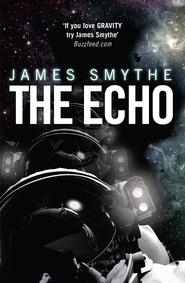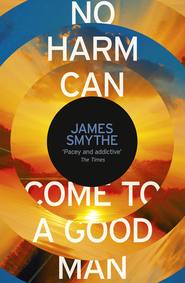По всем вопросам обращайтесь на: info@litportal.ru
(©) 2003-2024.
✖
I Still Dream
Настройки чтения
Размер шрифта
Высота строк
Поля
‘Oh God, absolutely,’ she said. ‘If you walked behind him, I’m pretty sure you’d smell quinoa, weed, and hiking boots.’
Holy shit.
Holy shit.
* * *
I gave myself two hours of lying in that slightly-too-small crash-room bed before I abandoned any hope of sleep. I got up, took a shower. In the distance, outside, I could hear birds. It’s not an irregular thing, that I can’t sleep; and as soon as the birds start and I’m not asleep, I’m not going to be. It’s one distraction too far: the sense that there’s something out there that’s already begun, that’s already doing what it’s going to do for the day. It’s an alarm, in the truest sense of the word.
I dressed, taking underwear and a tee from a drawer. Bow provided them. Not cheap stuff. American Apparel. The company wanted you to feel as good as possible if you were doing crunch hours, the sort of work that meant you had to stay the night there. Maybe then you’d be less likely to leave if another tech company tried to poach you.
I went to the lab, lights flickering on as I walked, making me feel like I was in a movie. I liked that feeling. Always have. When everything conspires to make it seem like the things that are out of your control are actually working for you; or, better yet, that you’ve got the power to control them a little. To tell the inanimate what to do.
I sat at my desk. Booted the system. Quality time with SCION, a chance to see what state Park left the last build in. Positivity, I told myself. I had a job to do. I could work with the source code, because nobody else was there to have their own terminal. At that point, SCION was an application. Running like anything else, like, I don’t know, Internet Explorer, or iTunes. There are a million ways to make an intelligence. Some of them are multitudes of smaller applications, smaller concepts – smaller AIs – running together, and they feed off each other, passing information. Some of them are data-miners, basically, powered by algorithms, pushed to complete tasks. Some of them – and Organon was – is – a good example of this – were more complicated, and yet somehow far simpler, driven by simple understanding engines, attempts to try to comprehend the data being given to them. Not about the breadth of data, but what to do with it. SCION was a bit of everything.
It started as a bit of linguistic software to translate the languages in spreadsheets, Mark Ocean’s pet project. Something he’d worked on with Laura’s father, Daniel Bow, way back when. And they turned it into this rudimentary intelligence, like a chatbot, really. Of course, that was, I don’t know, the early 1980s. There’s no way they were realizing their goal then. Just wasn’t ever going to happen, because they were building something that was – in those terms – impossible. I’ve seen the source code, the stuff they originally wrote. Or that Bow wrote. His signature is all over it. And there are dates in the code as well, going back to the mid-70s. We took bits of it. Some ideas. I mean, not much. Barely anything. The code was pretty naïve. I told Laura about it, before we got together; flirting with her, using my knowledge as something advantageous. I told her it was like me, when I was a teenager, when I first started dating. Trying to kiss the girl I liked, but I didn’t know what I was doing. The right principle, but learned from TV, from the movies, and I wasn’t old enough or smart enough to know what I was doing wrong. Accidentally getting some things right; but for the whole, it not quite working.
It may have started life as a piece of translation software, but by the end of 2007 it was powering Bow’s customer service helpline. The people at the other end were real, but the call sorting, the touch-tone menu stuff, the questionnaire at the end, that stuff was all SCION-powered. (And by 2013, 2014, we had it answering calls as well. Generated voice stuff, telling you how to fix something. A hit rate of sixty-five per cent of callers believing it was a real person. That was industry best.) It was running – entirely running, until something in it broke – our internal comms systems, handling the email servers, maintaining traffic flow on our website (lots of throttle and choke there, to make sure it was always accessible, that it never went down). It was on our PDAs and we were gearing up for cell phones; but more than those, it was on our laptops. SCION was the architecture behind BowS, our operating system. It was the stuff behind the front end that everybody liked, the stuff with the graphics and the tri-tone chimes when you booted the computer, the one that sounded like the start of a song that never quite kicked in. We had a market share of somewhere around six per cent. Less than Apple, more than any single Linux installations. We were competing. BowS was powering cash machines, credit card readers, registers in shops. It was being installed as the back-end to a series of traffic cameras in the Bay Area, as a trial to see if we could take it further. It was running inside accounting software, word processors, web design. It was everywhere, and yet nobody knew exactly how versatile it was.
Why? Because people didn’t know what an AI was. The movies were all, here’s Skynet with some robot army. Or the one from WarGames that everybody remembers from when they were kids. Movies where AIs are replicant humans, or operating systems you can fall in love with, or beautiful robots kept in a sex dungeon. That’s not reality. It’s simply not. In reality, an AI is a piece of software that’s a bit more efficient than just doing the one thing, not being able to learn from its mistakes. That’s an AI. Back then, people talked about Oh, when we have artificial intelligences in our homes, blah blah, but we were already there. AIs had slipped through the net because they weren’t called that. We joked about that, when we were all hired. That we were going to try to stop whatever we built becoming some evil warmongering AI that was going to destroy the world. It was a joke, but it also wasn’t. Using ethics in artificial intelligence design.
Вы ознакомились с фрагментом книги.
Приобретайте полный текст книги у нашего партнера:
Приобретайте полный текст книги у нашего партнера:










